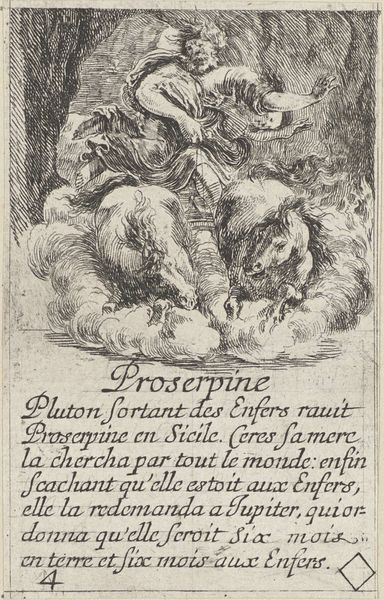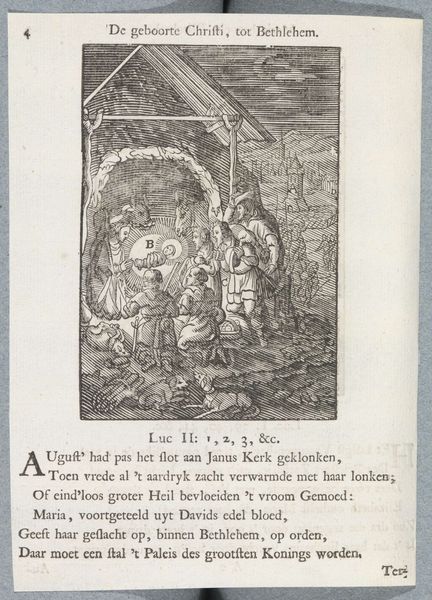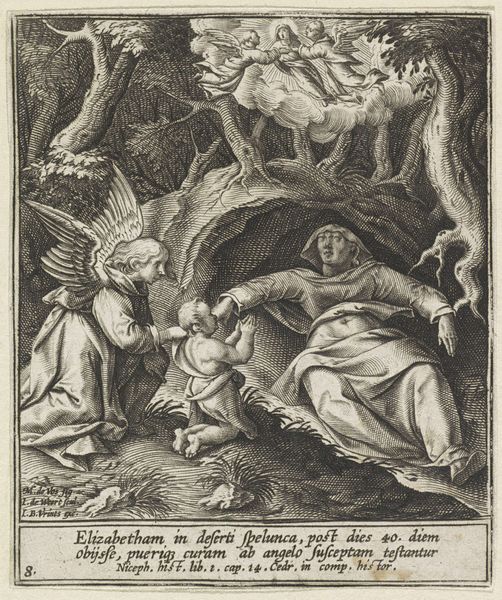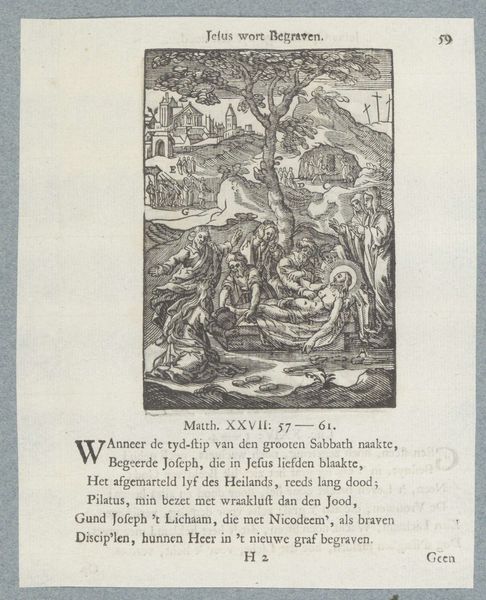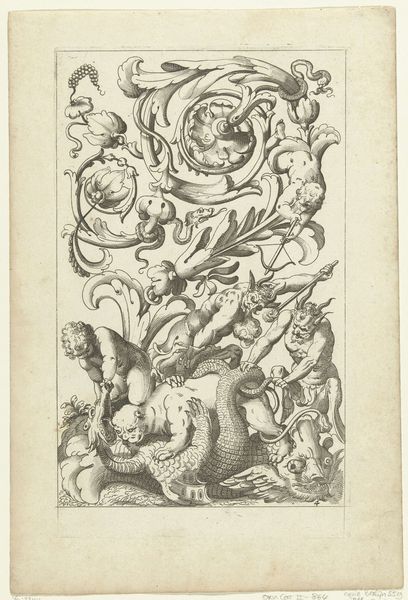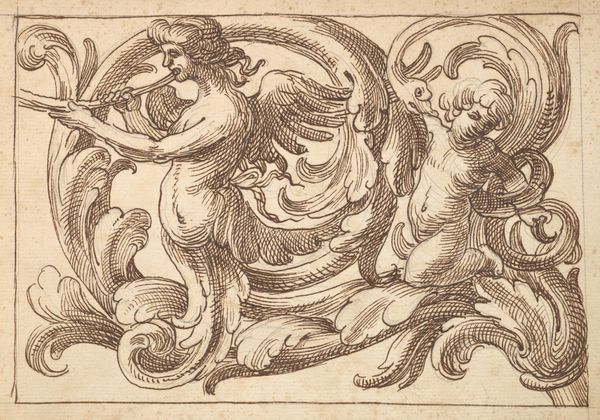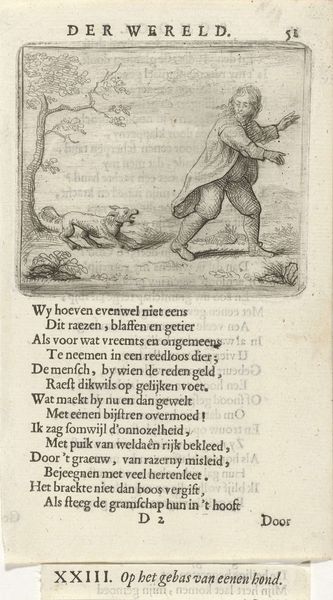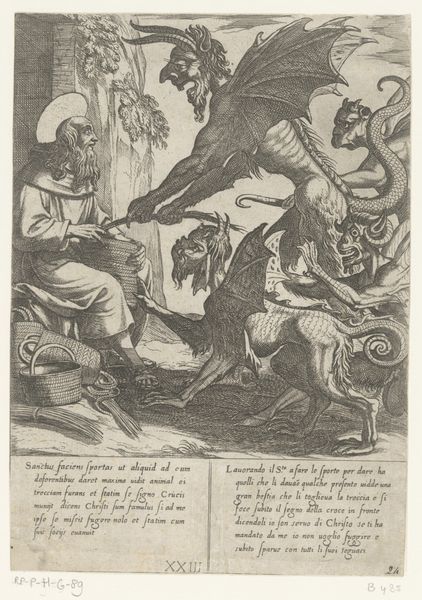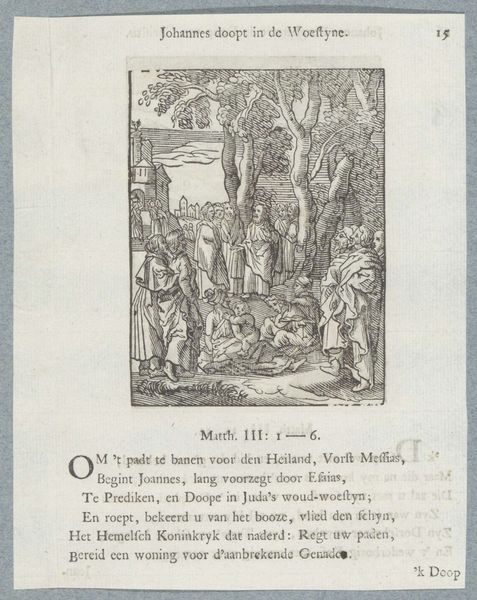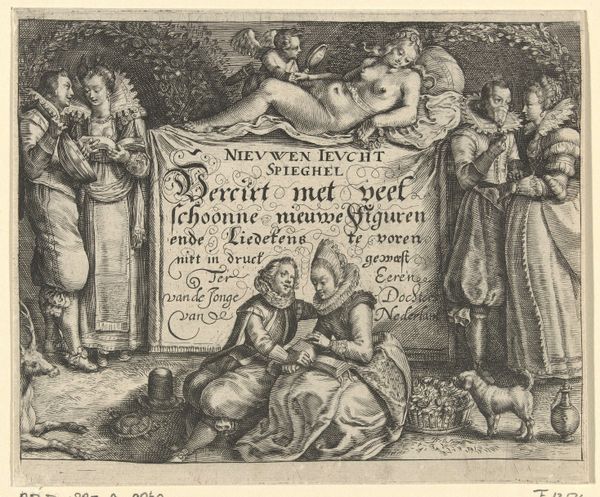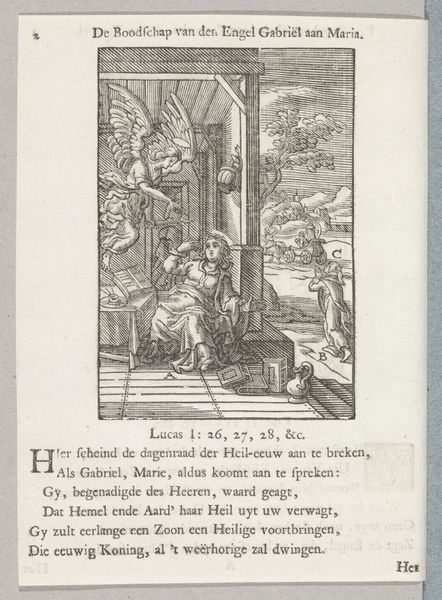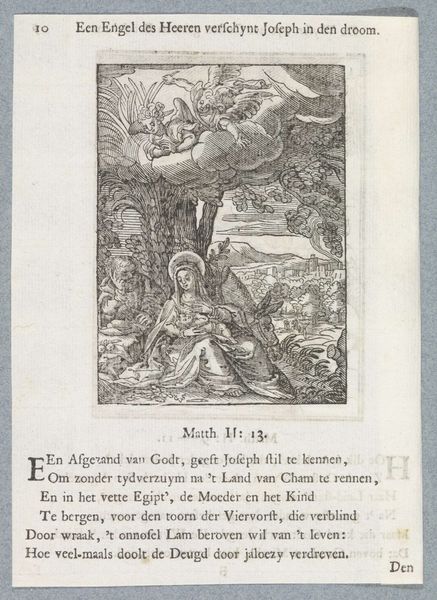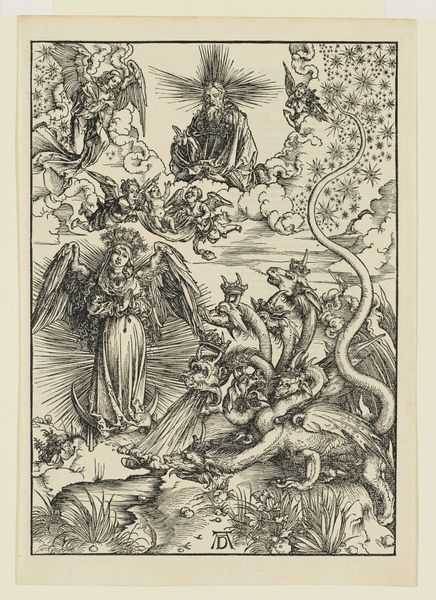
print, intaglio, engraving
#
narrative-art
#
baroque
# print
#
intaglio
#
old engraving style
#
figuration
#
history-painting
#
engraving
Dimensions: height 88 mm, width 55 mm
Copyright: Rijks Museum: Open Domain
Curator: Let's turn our attention to "Schoppen tien," an engraving by Stefano della Bella, created sometime between 1620 and 1664. It's currently held in the Rijksmuseum's collection. What’s your first impression? Editor: Chaos, rendered in miniature. There's an immediate sense of tragedy. The figures are caught in violent, almost theatrical poses of despair, aren't they? Curator: It’s drawn from the classical myth of Niobe, who boasted of her numerous children to the goddess Latona, who only had two. As punishment, Latona's children, Apollo and Diana, slay Niobe’s offspring. This engraving accompanies an inscription outlining the myth itself. We see Apollo and Diana taking aim from the clouds, a chilling display of divine retribution, wouldn’t you agree? Editor: Absolutely, there’s an icy emotionality to the violence, and it is embedded into a card in a suit: "Schoppen tien," a playing card. We are dealing with layered visual symbols, which I am curious to dissect. Arrows often convey love or violent intent, and in the composition, what weight should we ascribe to Cupid's arrow, as we find the Roman Gods using bows in their hunt to kill? The story and figures are set against a gaming tableau, thus connecting power dynamics and mortality. Is this possibly social commentary on class or societal roles? Curator: It is definitely about hubris, and, I agree, power dynamics, but on several different levels: the power of the gods over mortals, certainly. It also delves into the complexities of female rivalry and the consequences of transgressing against social boundaries—Niobe's boast is a direct challenge to the established hierarchy of divine motherhood, isn't it? Furthermore, we can understand the artist’s choices with respect to the Baroque context that privileged movement and emotion—a time when rulers wielded complete authority to impose order over turmoil, thereby solidifying its own dominance by contrasting itself with the supposed primitive disorder that the Baroque replaced. Editor: Fascinating, I can't help but think of all the symbolic undercurrents informing each of these choices by della Bella—this image resonates deeply with historical echoes. Curator: Precisely, Stefano della Bella managed to weave complex socio-political narratives into an economical composition. It reminds us that art is often engaged in multifaceted critical and intellectual reflection. Editor: This artwork reveals hidden meanings that span over long stretches of time and evolve along cultural understandings of the subject at hand, therefore offering viewers today the chance to unpack embedded assumptions and expectations regarding classical mythology.
Comments
No comments
Be the first to comment and join the conversation on the ultimate creative platform.
